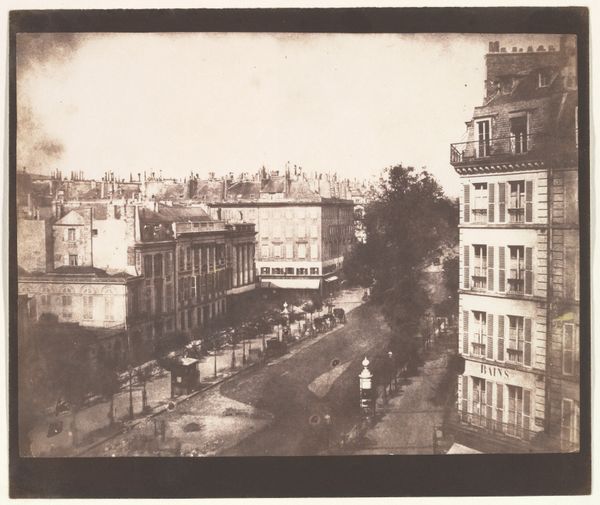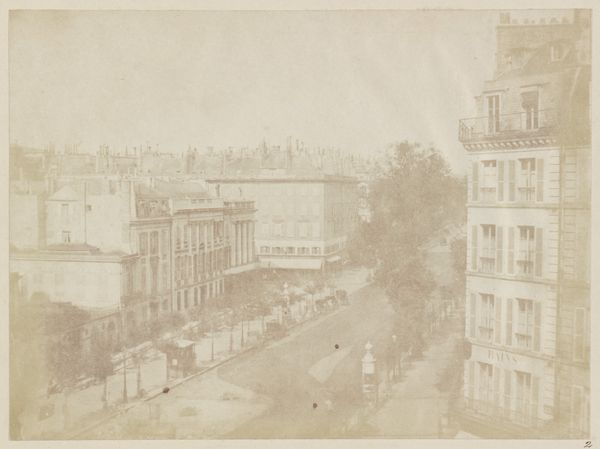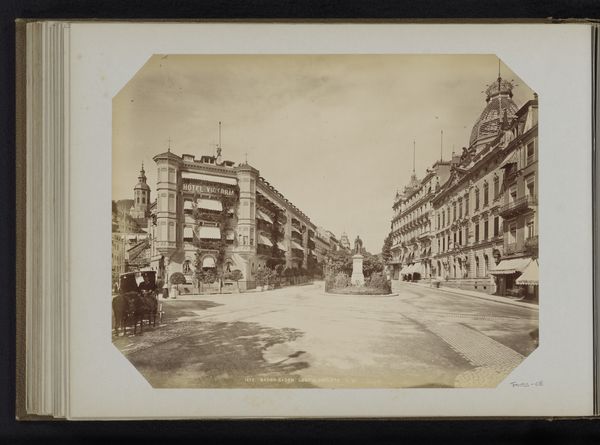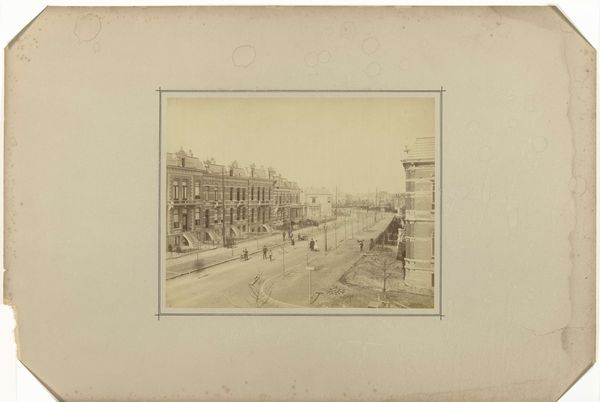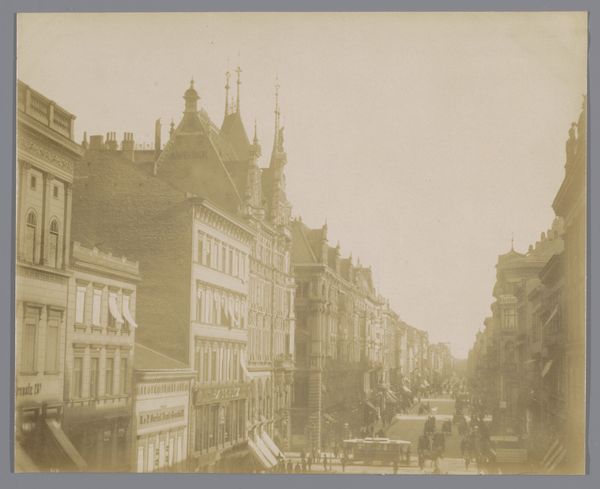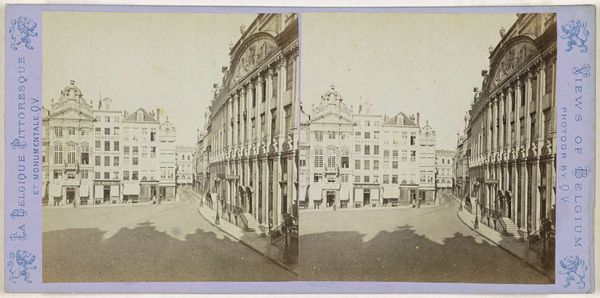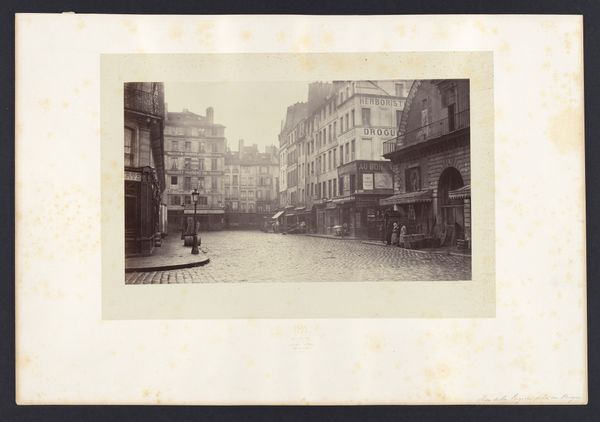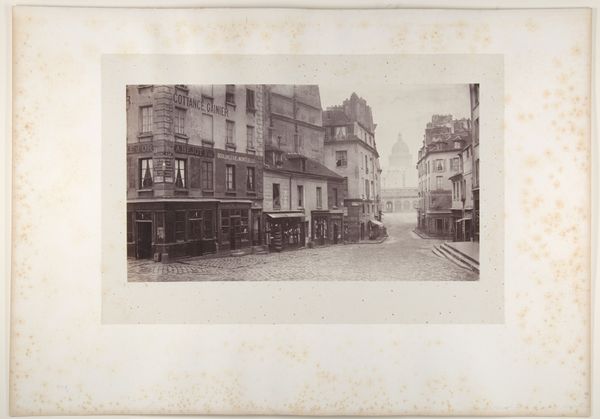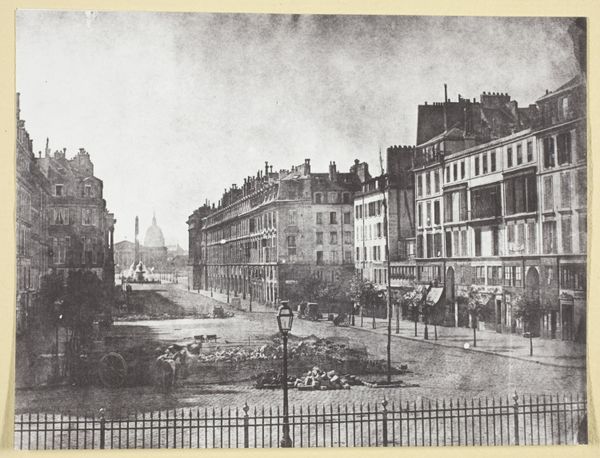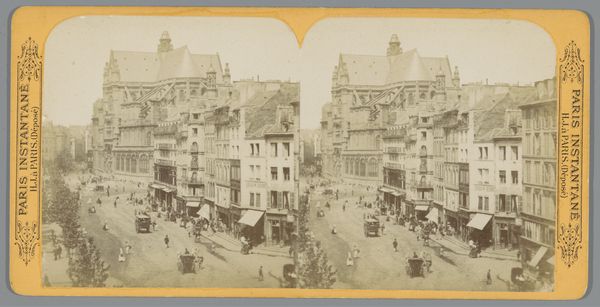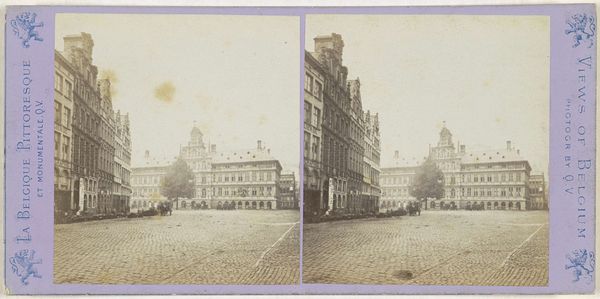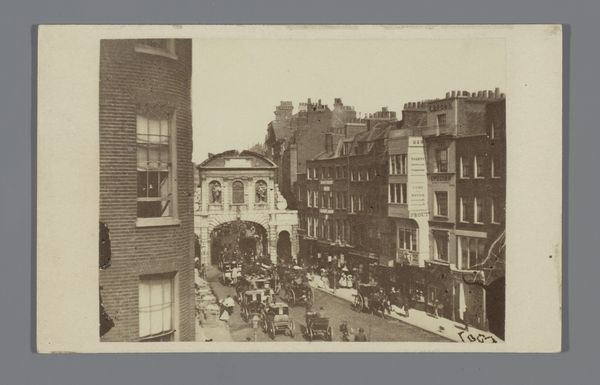
daguerreotype, photography, architecture
#
print photography
#
daguerreotype
#
photography
#
romanticism
#
cityscape
#
street
#
architecture
Dimensions: 15.1 x 19.9 cm (5 15/16 x 7 13/16 in. )
Copyright: Public Domain
Editor: This is William Henry Fox Talbot's "The Boulevards at Paris," taken in 1843. It's a daguerreotype, so, photography. The sepia tones give it such a wistful, almost melancholic air. The buildings feel solid, yet slightly blurred as if seen through a dream. I’m curious, what do you see in this piece that perhaps I’m missing? Curator: Ah, yes, a scene captured at a standstill, full of potential stories. What catches me is the solitary figure in the street. See how all the hustle around is a blur, a ghost. This photograph really showcases the innovation in the world back then, like alchemy meets everyday life! It asks me, "Who is this person caught still in time, when everything is racing to change?". Editor: That's so interesting; I hadn’t thought about it that way. The stillness as almost a defiance to progress. The ghostlike quality also makes me consider the perspective of Paris as a new bustling urban setting in mid 19th-century Europe. It really captures its liminal qualities as well. What's it trying to capture in this new technology? Curator: Exactly. Consider Talbot’s own struggles with photography as much like taming unruly light! But the real treasure is how such imperfections give soul to images. Now the art isn't in only creating what it 'captures', but rather also what that process shows about a given cultural perspective or intention. Don't you agree? Editor: Absolutely. I came into this thinking about aesthetic, and the tone of this. However I can really begin to appreciate the technology that plays in informing the culture. Curator: Precisely! This artwork encourages one to pause, think of technology’s influence in those moments caught in between now, then, and what will never exist again outside itself... It’s an invitation into memory, history, change... and change in our viewing perspective as well.
Comments
No comments
Be the first to comment and join the conversation on the ultimate creative platform.
